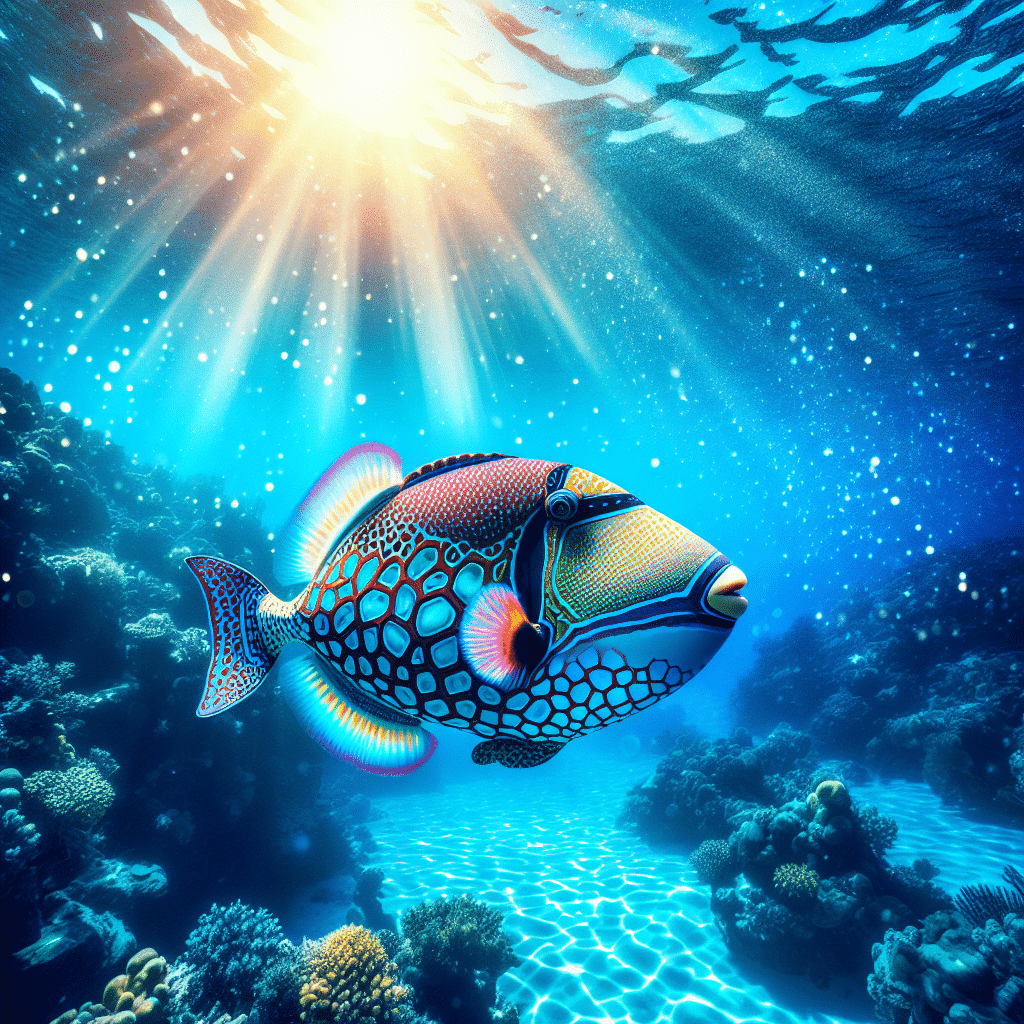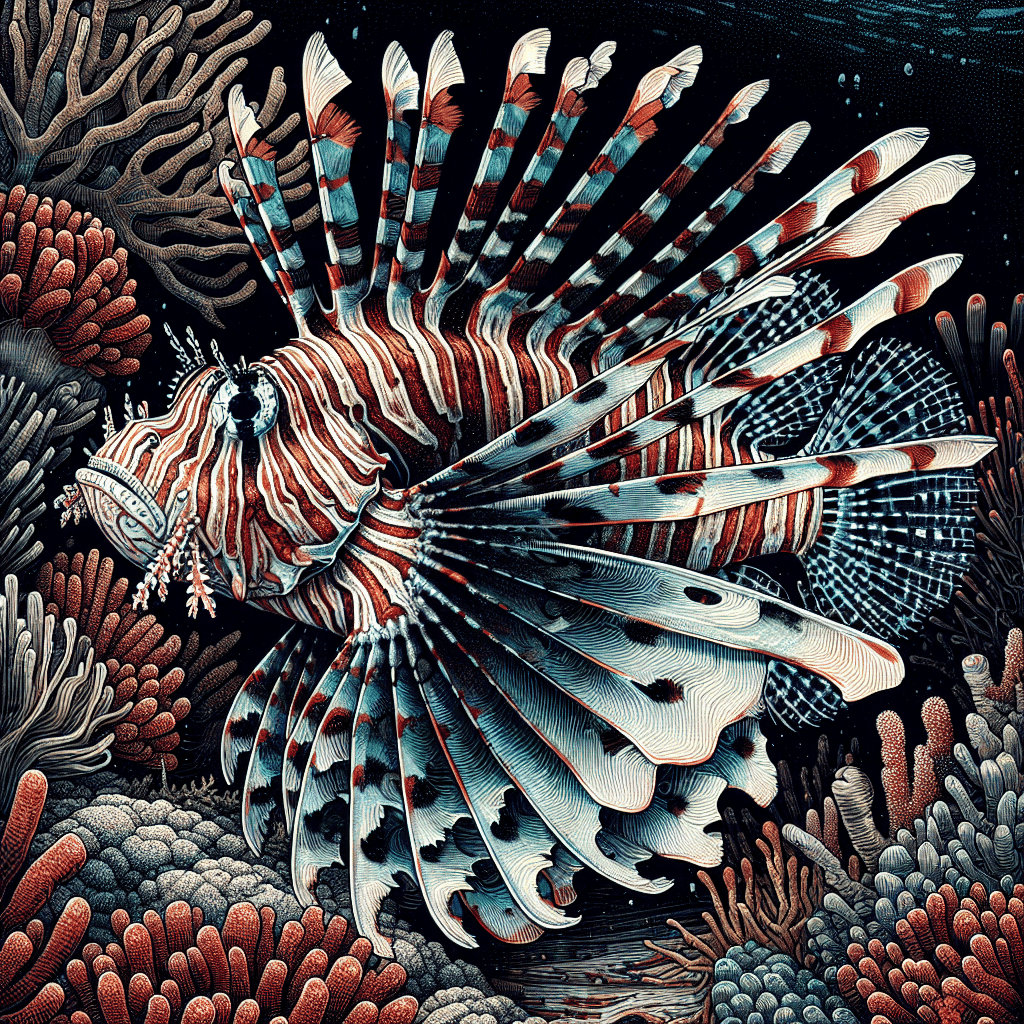The World of Triggerfish
Introduction to Triggerfish
I have always been fascinated by triggerfish. These vibrant and often quirky fish belong to the family Balistidae, which includes around 40 species, showcasing a dazzling array of colors and patterns. Most triggerfish are found in shallow coastal habitats, especially around coral reefs, making them a delightful addition to any reef tank. Their unique appearance and entertaining behaviors make them a favorite among aquarium enthusiasts.
Triggerfish can vary significantly in size, with the largest member, the stone triggerfish, reaching up to 1 meter (3.3 feet). However, most species fall within the 20 to 50 cm (8 to 20 inches) range, which makes them well-suited for home aquariums (Wikipedia).
Diversity of Triggerfish Species
The diversity among triggerfish species is truly remarkable. They are primarily found in tropical and subtropical seas around the world, with the greatest species richness in the Indo-Pacific region. Many species exhibit bright colors, intricate patterns, and unique markings, which not only enhance their beauty but also contribute to their appeal in the aquarium trade.
Here’s a quick overview of some notable triggerfish species:
| Species Name | Size Range (cm) | Habitat |
|---|---|---|
| Niger Triggerfish | 20 – 30 | Coral reefs and lagoons |
| Titan Triggerfish | 30 – 75 | Shallow coastal waters |
| Gray Triggerfish | 30 – 40 | Coastal waters, reefs |
| Reef Triggerfish | 25 – 30 | Coral reefs and rocky areas |
| Clown Triggerfish | 25 – 30 | Coral reefs |
Many species are prized for their bright colors and patterns, which can fetch high prices in the aquarium market. Unfortunately, this demand has led to over-collection of some species, prompting researchers to explore captive breeding programs to alleviate pressure on wild populations (Caradonna Dive Adventures).
With their dynamic colors and engaging personalities, triggerfish are a great choice for anyone looking to enhance their marine aquarium with a bit of flair! If you’re interested in learning more about other marine fish that can complement your reef tank, check out our articles on clownfish, tang, and pufferfish.
Characteristics of Triggerfish
Understanding the traits of triggerfish can really enhance my experience as an aquarium hobbyist. These fascinating fish have some distinct physical features and behaviors that make them unique.
Physical Attributes
Triggerfish have an oval-shaped, highly compressed body that is quite striking. They possess strong teeth adapted for crushing shells, which is essential for their diet. Their jaw structure is interesting, with each jaw featuring a row of four teeth on either side. The upper jaw has an additional set of six plate-like pharyngeal teeth, which help them process their food effectively (Wikipedia).
One of the most notable features of triggerfish is their dorsal spine. They possess a unique structure where the first two dorsal spines can be erected for protection against predators. The first spine locks in place with the help of the second spine, which is why they are called “triggerfish”—the second spine acts as a trigger to unlock the first (Wikipedia). Their body design, including narrow snouts and strong jaws, allows them to adapt well to their reef environments.
| Physical Trait | Description |
|---|---|
| Body Shape | Oval, highly compressed |
| Teeth | Strong, adapted for crushing shells |
| Dorsal Fins | Three dorsal fins; first two can lock for protection |
| Snout | Narrow and strong |
Behavioral Traits
When it comes to behavior, triggerfish are quite fascinating. They are known for their territorial nature, especially during breeding season. Males migrate to traditional spawning sites and establish territories, often accompanied by multiple females. This polygynous behavior is common among some species (Wikipedia).
In addition to their mating habits, triggerfish have a unique way of protecting themselves. They can lock themselves into hiding spots like holes or under rocks using their dorsal spine mechanism. When threatened, they can release the “trigger” to swim away quickly. This behavior not only serves as a defense mechanism but also helps them evade predators effectively (Underwater Tribe).
Overall, the combination of their physical attributes and behavioral traits makes triggerfish a captivating addition to any reef tank. For those interested in a more diverse marine environment, consider pairing them with other species like clownfish or wrasse for a vibrant ecosystem.
Titan Triggerfish
Habitat and Distribution
The titan triggerfish, also known as the giant triggerfish or moustache triggerfish (Balistoides viridescens), is quite the remarkable species. I find it fascinating that this fish can reach lengths of up to 75 centimeters (30 inches), making it the largest species of triggerfish in its range. You can typically find them in lagoons and reefs at depths of up to 50 meters (160 feet) across most of the Indo-Pacific, though they do not inhabit Hawaii.
Feeding Habits
Titan triggerfish have a diverse diet that includes sea urchins, mollusks, crustaceans, tube worms, and even coral. They have a unique feeding style, where they often turn over rocks and stir up sand to find food. This process not only helps them locate their meals but also attracts smaller fish that feed on the detritus and smaller organisms stirred up during their foraging. Here’s a quick look at their feeding habits:
| Food Type | Description |
|---|---|
| Sea Urchins | A primary food source, enjoyed raw. |
| Mollusks | Shellfish that are easily accessible. |
| Crustaceans | Includes crabs and shrimp. |
| Tube Worms | Found in sandy substrates. |
| Coral | Occasionally bites off pieces for nutrients. |
Reproductive Behavior
When it comes to reproduction, titan triggerfish have a fascinating yet aggressive behavior. Their breeding season lasts about a week each month, during which females can be quite territorial around their nests. These nests are typically placed in flat sandy areas and are vigorously defended against any potential intruders. I’ve read that divers who accidentally enter their territory might be attacked. While the bites from titan triggerfish are not venomous, they can cause serious injuries that may require medical attention.
Understanding these behaviors is crucial for anyone considering adding a titan triggerfish to their tank, as their territorial nature can impact tank dynamics. If you’re interested in learning more about other fish suitable for reef tanks, check out our sections on marine fish and specific species like the niger triggerfish.
Niger Triggerfish
Description and Behavior
The Niger Triggerfish, also known as the Redtooth Trigger, is a striking species that can grow up to 12 inches in length. Known for its powerful and aggressive temperament, this fish is capable of producing sounds and even changing color to express its mood. It primarily feeds on zooplankton and microcrustaceans, making it an interesting addition to any marine setup. However, due to its aggressive nature, it is essential to consider the behavior of this fish when planning tank mates.
Tank Requirements and Care
When it comes to keeping a Niger Triggerfish, there are specific tank requirements that need to be met to ensure its health and well-being. Adult Niger Triggerfish need a tank size of at least 180 gallons because of their large size and aggressive behavior.
Here are some important parameters to maintain in the tank:
| Parameter | Ideal Range |
|---|---|
| Ammonia | 0 ppm |
| Nitrite | < 0.2 ppm |
| Nitrate | < 10 ppm |
| Specific Gravity | 1.020 – 1.025 |
| Temperature | 72°F – 78°F |
| dKH | 8 – 12 dKH |
| pH | 8.1 – 8.4 |
To add a Niger Triggerfish to your aquarium, I recommend drip acclimating the fish to match its transport bag conditions with the tank’s temperature and salinity levels. Start by acclimating the fish in an established quarantine tank for about six weeks. This allows me to monitor for any harmful bacteria that could spread to other tank inhabitants.
It’s important to note that the Niger Triggerfish is not considered reef-safe and should not be kept in a reef aquarium. Instead, it thrives in a FOWLR (fish only with live rock) setup. When selecting tank mates, I should choose carefully to avoid aggressive species and invertebrates, as well as refrain from keeping other Triggerfish species to prevent hierarchy formation and fighting.
With proper care and attention to its needs, the Niger Triggerfish can live a healthy and vibrant life in your aquarium. For more information on other marine fish, check out our articles on marine fish and various species like lionfish and clownfish.
Gray Triggerfish
Size and Habitat
Gray Triggerfish can grow up to 17 inches long, making them a noteworthy species in the reef tank environment. They typically inhabit hard-bottoms, reefs, and ledges, often found in water depths exceeding 80 feet (Florida Fish and Wildlife Conservation Commission). Their preference for rocky substrates makes them a fascinating addition to a marine aquarium that mimics these conditions.
| Size | Habitat Depth |
|---|---|
| Up to 17 inches | Over 80 feet |
Feeding Preferences
When it comes to their diet, Gray Triggerfish primarily feed on benthic invertebrates. Their favorites include crabs, sea urchins, shrimp, sand dollars, and mollusks. For those of us who enjoy fishing, they are commonly caught using squid or cut bait. I’ve found that using small, sharp hooks is essential, given their hard, bony mouths, which can make hooking them a challenge.
| Diet | Common Baits |
|---|---|
| Benthic invertebrates (crabs, shrimp, etc.) | Squid, cut bait |
Angling for Triggerfish
If I’m targeting Gray Triggerfish, I recommend using light to medium bottom fishing equipment. A 20 to 50-pound test line works well for these fish, which usually weigh between 2 to 4 pounds. Interestingly, Gray Triggerfish are often found in association with red snapper, so if you’re after snapper, be prepared for some triggerfish to steal your bait.
| Fishing Gear | Weight Range |
|---|---|
| Light to medium bottom fishing gear | 2 to 4 pounds |
These triggerfish can be a fun challenge for anglers due to their bait-stealing tendencies, but with the right equipment and bait, they can be successfully caught and added to your collection of marine fish.
Reef Triggerfish
Geographic Range
The reef triggerfish, known scientifically as Rhinecanthus aculeatus, inhabits the Indo-Pacific region. Its geographic range spans from thirty degrees north to south in latitude. You can find them from the Hawaiian Islands, extending southward to Polynesia and Australia, and westward through Micronesia and Melanesia. They also inhabit the East Indies, including the Philippines, across the Indian Ocean, and along the coast of Africa and the Red Sea (Animal Diversity Web).
Feeding Ecology
Reef triggerfish are primarily found in shallow outer reef habitats, where they swim along the bottom in search of food. Their diet mainly consists of reef invertebrates and algae, including small crustaceans, worms, brittle stars, sea urchins, and snails. They are quite versatile, consuming a wide variety of crustaceans, mollusks, and fish by rooting through sand or rocks for their meals (Animal Diversity Web).
| Food Item | Type |
|---|---|
| Small Crustaceans | Invertebrate |
| Worms | Invertebrate |
| Sea Urchins | Invertebrate |
| Snails | Invertebrate |
| Algae | Plant |
Conservation Status
Currently, the reef triggerfish is not at risk, as it remains abundant in many marine environments. Although their population is stable, potential threats include habitat alterations, tropical fish collectors, human population growth, and related factors that could reduce their numbers (Animal Diversity Web). Because of their vibrant colors, these fish are often sought after in the aquarium trade, which can sometimes lead to over-collection. Researchers are making efforts to raise triggerfish in captivity, aiming to alleviate pressure on wild populations (Caradonna Dive Adventures).
For more information on other marine species, feel free to check out the sections on lionfish, clownfish, and pufferfish.
Triggerfish in Aquariums
Setting up a tank for triggerfish can be an exciting challenge. Here are some tips and considerations to keep in mind as you create a thriving environment for these unique fish.
Captive Care Tips
Tank Size: For species like the Niger Triggerfish, a minimum tank size of 180 gallons is recommended due to their potential adult size of about 12 inches. This size allows for adequate swimming space and helps manage their aggressive temperament.
Water Conditions: Recreating the natural water conditions of the Indo-Pacific region is essential. Here are the recommended parameters:
Parameter Ideal Range Ammonia 0 ppm Nitrite < 0.2 ppm Nitrate < 10 ppm Specific Gravity 1.020 – 1.025 Temperature 72°F – 78°F dKH 8 – 12 pH 8.1 – 8.4 Acclimation: When introducing a Niger Triggerfish to your aquarium, it’s important to drip acclimate them for a smooth transition. Start by acclimating them in a quarantine tank for about six weeks to monitor for any harmful bacteria.
Feeding: Triggerfish require a nutrient-rich diet. Offering a mix of high-quality pellets, frozen foods, and occasional fresh seafood can help maintain their health.
Tank Mates: Be cautious when selecting tank mates. Niger Triggerfish are not considered reef-safe and should not be kept with invertebrates. It’s best to avoid other aggressive species or any other Triggerfish to prevent hierarchy issues and fights (Light Fish).
Challenges and Considerations
Aggressiveness: Triggerfish, particularly the Niger variety, can be aggressive. This behavior may pose challenges when introducing new fish to the tank. Ensure tank mates are compatible and monitor interactions closely.
Habitat Needs: Creating an environment that mimics their natural habitat is crucial. Incorporating live rock and hiding spots can help reduce stress and provide comfort to your triggerfish.
Maintenance: Keeping the water pristine is vital for the health of triggerfish. Regular water changes and monitoring water parameters will help maintain a stable environment.
Space Requirements: Due to their size and territorial nature, providing ample space is important. A cramped tank can lead to stress and aggression.
Compatibility with Other Fish: Avoid keeping triggerfish with more docile species like clownfish, as their aggressive behavior can lead to bullying or injury.
By following these tips and considering the specific needs of triggerfish, I can create a healthy and vibrant aquarium that showcases these captivating fish. If you’re interested in more marine fish options, feel free to explore our articles on marine fish or specific species like barracuda and lionfish.



